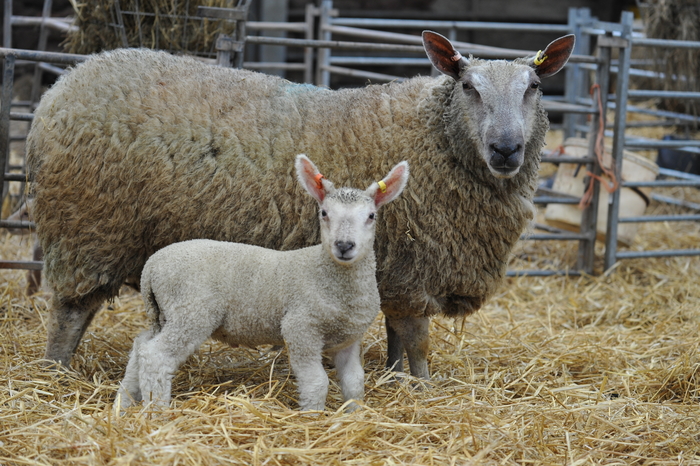Correct management of pregnant ewes will reduce the number of lamb mortalities from birth to weaning.
Lamb losses post-lambing can be as high as 15% in Welsh flocks yet many are preventable, insists vet Helen Scott, of the Carmarthen Veterinary Centre.
In a bid to reduce this high level of loss, veterinary practices across Wales are delivering a series of advice workshops to farmers supported by the Welsh Government, Farming Connect, Lantra and NADIS.
During one of these events, run by the Carmarthen Veterinary Centre, farmers were warned that the majority of losses occur in the first 48 hours after a lamb is born with risk factors ranging from low birthweight and difficult births to poor hygiene and litter size.
Some of these causes are the result of decisions and actions taken in the weeks leading up to the lamb’s birth.
Ms Scott emphasised the need for farmers to get their forages analysed and, when the results are known, to ensure rations are balanced accordingly.
Testing forage can result in cost savings on supplementary feeding also. “If the energy level in your silage is very low but the protein is OK it will be cheaper to supplement with fodder beet or sugar beet than cake because you don’t need the additional protein,’’ Ms Scott advised.
She suggested that analysis of forage quality can allow for lower and later supplementation, reducing the risk of over-large lambs.
Scanning ewes to establish the number of lambs they are carrying is also important as it allows allocation of feed according to need.
“Scanning can allow for the grouping and division of ewes to enable easier management of feeding,’’ said Ms Scott.
If attention has been given to ewe nutrition, lambs will be born with a good level of brown fat meaning that they will have higher energy reserves in those crucial early days.
Ewe health and nutrition will also dictate colostrum quality and quantity. “Colostrum is the main source of energy, it is high in fat, sugar and protein and bridges the gap between when brown fat starts to diminish and weaning,’’ said Ms Scott.
“When lambs have used up all their brown fat they can’t shiver and this means they can’t raise their body temperature.’’
Although triplet-bearing ewes produce the greatest volume of colostrum, intakes per lamb are lower because of the numbers competing for that colostrum so these animals will need special attention.
Ms Scott advised stomach tubing all three lambs with colostrum and cross fostering the strongest triplet onto a single. “You don’t want the situation of a tiny lamb competing with a big lamb.’’
Check lambs have been suckling within two hours of birth – the ewe’s teats should be wet from saliva deposits if a lamb has suckled.
If colostrum needs to be supplemented, ewe colostrum should be the priority – draw milk from the ewe. But if this is not possible opt for dairy cow colostrum from a Johne’s-free herd. Powder colostrum is the final option and, if using this, aim for a product with the highest level of immunoglobulins (IgG).
A lamb should receive 50ml of colostrum in the first two hours of birth and 200ml in the first 24 hours. “I’m of the opinion that you can’t give lambs enough colostrum,’’ said Ms Scott.
If heating colostrum to feed to a lamb don’t do so in a microwave as this action destroys the protein content.
High levels of hygiene at and post-lambing will minimise the amount of antibiotics used at this stage of production.
Top tips for preventing lambing losses from birth to weaning
Select breeds for lambing ease
Don’t allow a ewe to get too fat – feed according to body condition score, forage quality and the number of ewes she is carrying
Manage late pregnancy nutrition
Minimise disturbance by people and by dogs
Ideally wear latex gloves at lambing and when dipping navels with iodine.
Farming Connect, which is delivered by Menter a Busnes and Lantra, has received funding through the Welsh Government Rural Communities – Rural Development Programme 2014-2020, which is funded by the European Agricultural Fund for Rural Development and the Welsh Government.


